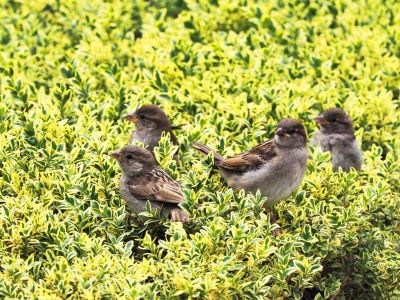What are Living Walls?
What are living walls? Living walls for birds are simply a bird friendly hedge that acts as a bird safe privacy screen. The hedge is typically comprised of a mix of tall and short plant species that work together. A living wall for birds not only provides habitat for birds, pollinators, and other creatures but it also lends privacy, reduces noise, and defines the edge of your landscape. Plus, this type of hedge, once established, is low maintenance.
How to Create a Privacy Screen for Birds
Fall is the best time for planning your bird safe privacy screen. What plants should you consider? First off, select flowering trees to give the hedgerow height. Choose understory trees like serviceberry or native dogwood rather than those with an upright habit. Next, pick a variety of native shrubs. Native shrubs are often more easily grown, as they have already adapted to the area and the food, they produce is the food that birds, and other wildlife seek. Pick out some native evergreens, briars, and brambles that will provide year-round shelter for the birds and nice color and texture for you. Plus, those thorny brambles will help keep out predators, such as cats. Add some vines to the mix. They will clamber up shrubs and into trees making a true thicket. Lastly, choose some flowering perennials whose sweet nectar will provide sustenance for not only hummingbirds but bees and butterflies too. Select some early summer bloomers and some that bloom late into the growing season for continuous color.
Bird Friendly Hedge Plants
A bird friendly hedge is not your typical American hedge made up of one species of tree or shrub that is scrupulously pruned. A privacy screen for birds is instead composed of multiple species of varying heights that work together to create a living fence. Some native shrubs to include in a privacy screen for birds are:
BlueberryElderberryHackberryViburnumWillow
Bayberry, holly, and wax myrtle are excellent choices as well that will offer food through the winter months. Evergreen junipers and cedars along with native briars and brambles like blackberry, native rose, raspberry, salmonberry, and thimbleberry make for a bird safe privacy screen. Through these, grow a native grapevine for the birds or a native trumpet honeysuckle to provide the hummingbirds nectar. Perennial options are almost unlimited provide you consider your USDA zone and the amount of sun exposure the site gets. Whatever your choices, do remember to incorporate some early spring as well as late fall bloomers.
